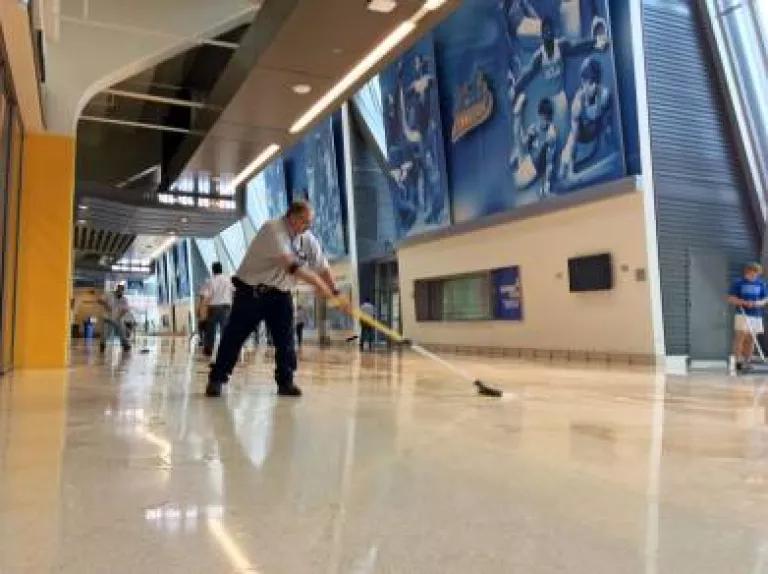
What are we to make of the incongruous images of tens of millions of gallons of water gushing skyward in Los Angeles this week in the midst of a statewide drought emergency? And what lessons can be drawn from the resulting flood of the Westwood neighborhood and the UCLA campus, including the standing water on the basketball floor at Pauley Pavilion, the Bruin’s home court?
Boatload of Trouble -- Water Main Break Floods UCLA's Pauley Pavilion on 7-29
Photo paulphootrakul, used with permission
First, water main breaks are so frequent that most don’t make the news. As I wrote here back in February, only a small number of water main breaks actually make the news. What’s more, all the main breaks put together are only a fraction of the total amount of water being lost every day from water utility pipes. Much more water is lost from leaks that continue unseen for months and even years. California is estimated to lose about 10 % of its treated drinking water each year to leaks and breaks from public water systems. About 1/3 of this, or about 350,000 acre-feet of treated drinking water, could be cost-effectively saved – a volume that is nearly double the entire annual water use of San Diego, the state's second largest city.
Secondly, large diameter water mains contain high volumes of water under pressure. When a large water main breaks, the hazard to life and property can be similar to a dam failure. In fact, NRDC has recommended that EPA encourage states to monitor the safety status of large water mains that same way all states monitor the safety status of dams, ranking them for attention by the potential for damage that could be done in the event of a sudden failure. We developed a draft bill that would require the establishment of a clearinghouse of water main break data, and encourage the adoption of hazard identification and mitigation programs for large water mains. Such legislation has no prospects in today’s dysfunctional Congress, but both proposals can be easily adapted for more immediate implementation by the states themselves.
Third, the value of the water lost to waste from a large water main break is only part of the cost, and may be a small part of the cost, of such incidents. Water utilities need to consider the value of damaged property – public property such as street pavements and highway infrastructure, as well as private property, including vehicles, homes, commercial buildings, disruption of business, and lost sales. A water main break is not a natural disaster, and the cost of repairs, clean up, and damages gets laid at the water utility’s doorstep. In California, water suppliers who are implementing the California Urban Water Conservation Council’s best management practices on water loss are supposed to be tallying not only the amount of water lost from each reported break, but also the damages attributable to the break. Utility managers and elected officials need to take these additional costs into account when considering the cost-effectiveness of water loss reduction programs. The cost of lost water is only the beginning.

Mopping Up at UCLA -- Court Floor May Need Replacement
Photo © AP Photo/Matt Hamilton, used with permission
Finally, the geyser in Westwood tells us something about where our priorities need to be placed when it comes to investments in California’s water infrastructure. The Legislature has yet to formulate a new water bond, with some interests holding out for major state funding for uneconomic new dams to store water of uncertain availability. NRDC and the Pacific Institute recently reported on the great potential for non-traditional projects to help bring supply and demand for water into balance. But for those who want “do something” to improve water supply reliability – and whose definition of “something” includes lots of concrete, steel, and construction equipment – Westwood represents an enormous opportunity – a challenge to be sure, but an opportunity nonetheless. Water suppliers can make cost-effective investments in water loss reduction today, and with financial assistance from the state, they could do even more. The time to get serious about water loss reduction is now – by committing funds to those water suppliers that take water loss prevention seriously.